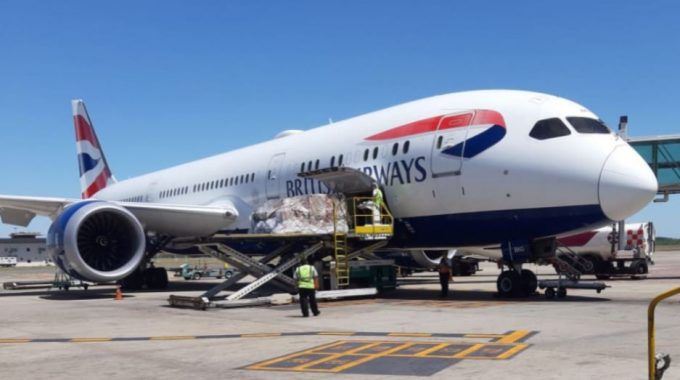No summer siesta for airfreight
Traditionally, air cargo spot rates tend to decline or remain flat at best during H1, ...

IAG Cargo plans to roll out spot rates on its website and through its API partners to guarantee best prices, it revealed during its market update webinar last week.
Camilo Garcia Cervera, chief sales and marketing officer at IAG Cargo, said the best rate would always be available online from the first quarter of 2024, and the decision to launch the service had been based on direct feedback from cargo customers.
“We have listened, and we have acted,” he said, “we are very excited to take our online penetration very close to 100%.”
Xeneta data suggests global air cargo spot rates flattened to $2.19 per kg in August, its lowest level since the onset of the pandemic, while capacity rose +7% year on year.
Earlier this month, Niall van de Wouw, chief airfreight officer at Xeneta, hinted of upward pressure on airfreight rates in the second half of October as capacity is taken out of the market, but too late to positively impact the industry’s 2023 performance. However, he also predicted negative signals for the rest of the year, given the prevailing soft macroeconomic outlook.
By all indications, most tradelanes are experiencing challenging conditions.
“What we are seeing is that demand and supply is differing and diverted even further in the second quarter,” said Marco Bloemen, MD of Accenture Cargo, during the webinar. He added that air cargo capacity was continuing to diverge due to increases in widebody passenger aircraft belly space.
Global air cargo capacity is up 1.8% in 2023, YTD, versus 2019, whereas demand in July ’23 was down 8.8% on January 2022, the first month this year that registered single-digit declines. Year-on-year air trade declines are expected to ease in Q4, due to last year’s soft quarter, according to Accenture Cargo data.
Additionally, Mr Bloemen said, raw materials, such as plastics and textiles, and hi-tech products like laptops and hard drives had experienced reduced demand of 17% and 16% respectively. He also noted a reduction in Covid-related commodities in the past year and said inventories had been accumulating over the past 14 months, which had limited air import demand.
There were also indications that some commodities are moving away from air cargo and would not be flying again. He said: “The hi-tech industry is suffering. Year-to-date, we have already lost almost 170,000 tonnes of laptops. That’s significant, but also, we see the smartphones and all the telecoms equipment, semiconductors are all still suffering and we are not seeing an improvement there, except of course for the iPhones.”
Accenture Cargo’s July data points showed North America to Europe was down 20%, with some commodities either disappearing or suffering majorly. Mr Bloemen said demand trends were dependent on the tradelane, with big regional differences: Europe was down by 20 points; and intra-Asia still down by 15 percentage points.
Mr Bloemen added: “We see some signals of the business from Asia into North America picking up. We are also seeing lots of e-commerce business that’s not in our air trade statistics, but also rising strongly. So, there are some differences by tradelane that we can monitor.”
It was revealed last week that Freightos had acquired some of IAG’s technology in a share deal. IAG stands to gain more if Freightos reaches “certain commercial milestones”.
Freightos said in an SEC filing: “In December 2021, we acquired the interlining technology and other related assets of a major airline group … The seller agreed to use the interlining platform exclusively for a period of time and will be entitled to a revenue share in connection with the commercialisation of the interlining technology.” An industry source confirmed to The Loadstar that the carrier was IAG.
Meanwhile, IAG Cargo has expanded its “constant climate” global network, that serves the pharmaceutical, bioscience and healthcare industry, adding Cincinnati Northern Kentucky International Airport as an approved station.
This brings the number of approved stations in the US to 21. According to the cargo operator, this service will be of special interest to pharmaceutical customers in Ireland and India whose life-saving medicines frequently transit through London-Heathrow to the US.
Mr Garcia Cervera added: “We are also back in China, operating to Shanghai and Beijing, enabling e-commerce and tech movements into our hubs and beyond, as we do in the case of North America and into Latin America.”
Comment on this article